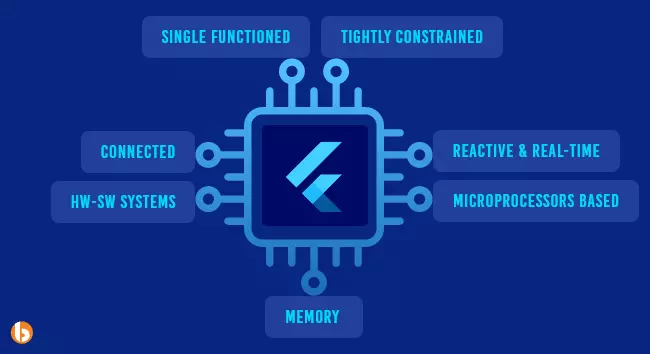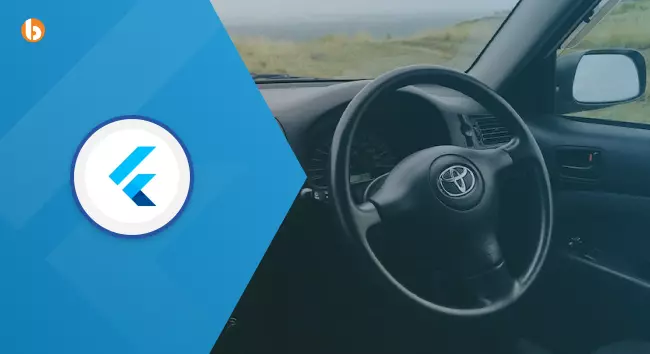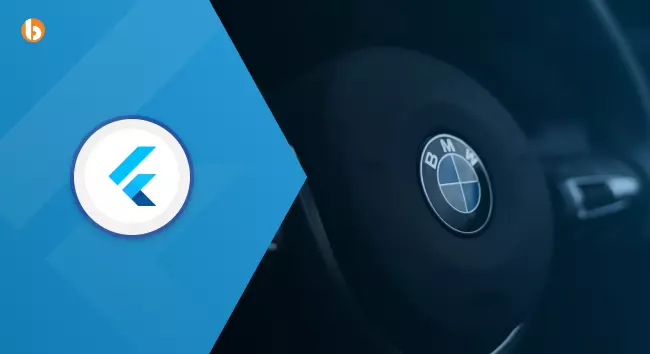Quick Summary:
Flutter for Embedded Systems is a revolution to the Flutter framework. Its features like layered architecture, portable code, and its ability to use a single Dart interface on various platforms present a glorious future for Flutter and the Embedded Systems market. In this blog post, we have covered the all-around aspects of Flutter Embedded systems, along with a few Case Studies of how some renowned brands are shifting to the Flutter Infrastructure for their Embedded Flutter development. Also, we have given the prospects of Flutter in terms of Embedded Systems and how it will revolutionize infotainment, IoT, and other similar Embedded Systems development.
Table of Contents
Introduction
The Dart-based cross-platform framework Flutter has gained a lot of significance in recent years. Though not mature or old enough for the market, it is the sixth most preferred framework among product owners, according to Stack Overflow Developer Survey 2022. Due to its cross-platform compatibility, another segment where it is gaining popularity is Flutter Embedded. Not just new product owners but many big names are also shifting to Flutter for Embedded regarding their product development. Before we jump to the all-around aspects of this Flutter Embedded, let us first look at ‘What are Embedded Systems?’
What are Embedded Systems?
Embedded Systems, as the name suggests, are a combination of software and hardware working collectively to perform a specific task that can exist independently or be a part of a more extensive system involving a microprocessor or a microcontroller-based system. The embedded systems also have an integrated circuit designed to carry out computation for real-time operations.
They can also possess a few complexities ranging from a single microcontroller to a suite of processors with connected peripherals and networks, from a no-user interface to complex GUIs. However, the complexity is proportional to the complexity of the task for which it is designed. Presently, around 98% of all microprocessors are used in embedded systems.
Characteristics of Embedded Systems

Why Use Flutter Embedded Systems?
Flutter has taken a significant upsurge in demand when it comes to Embedded Systems. However, the market still has a dilemma if Flutter is the ideal choice for business requirements and needs. Well! The answer to this dilemma exists in the characteristics of Flutter, and the characteristic that gives it the front-row is cross-platform development which allows using a single codebase on multiple platforms saving both time and money.
Now that we are familiar with the features of Flutter Embedded Systems. Let us look at why Flutter for Embedded Systems is feasible:
Easy Embedder API with AGL
Any infotainment system powered by Automotive Grade Linux can utilize the technology by embedding an API. The architecture of the Flutter engine makes it reasonably simple to support embedding in various target environments. Simply cross-compiling the engine and encasing it in an embedder is all required. Flutter apps can be easily integrated with in-vehicle systems thanks to the Embedder API, which is accessible to many engineers.
Although Flutter’s embedder api is still in its infancy, it has a wide range of capabilities that allow us to use attractive Flutter UI for various devices, like washing machines, smart refrigerators, Internet of Things (IoT) devices, and many more.
Community Support for Ongoing Development
No one could enhance Flutter to support their embedded cases without the backing of the big and open ecosystem. Developers are eager to participate in the open-source Flutter community because they view working with open-source software as a good investment in their embedded user experiences at any organization.
The flutter team has implemented support for embedded systems in the past two years, including web, Linux, macOS, and Windows apps. This suggests that they accomplished this with the aid of a vibrant community, and the future of being embedded with flutter is astonishing.
Features of Flutter for Embedded Systems
- Layered Architecture
- Portable Code
- Use a single Dart Interface on Various Platforms
- Optimized Flutter Embedder for Flutter Embedded Systems
- Flexible-Screen and Single Full-Screen
- Architecture Support for both x64 and Arm64
- Backend Support Wayland, DRM (GBM, EGLStream)
- Lightweight than Flutter desktop for Linux (without X11 and GTK/GDK)
- Keyboard, touch, mouse, clipboard support
- API compatibility with Flutter desktop for Windows
- External texture plugin (texture composition in Flutter) for media player, etc.
- Based on Flutter desktop for Windows
Embedding Flutter is feasible if you are planning for low-powered hardware devices like thermostats, smart-display, or similar devices. Also, you can embed Flutter into new operating systems or environments like new mobile platforms. But, if us saying Flutter is your tech stack for your Embedded Systems is not enough, then let us shift to a few market giants like TOYOTA and BMW, who align with our statement and How they partnered with Flutter for their Embedded Systems development.
Want to develop a scalable Flutter app to grow your business?
Being a prominent Flutter App Development Company, we help you develop cost and time-efficient Flutter applications.
Why Did Toyota Choose Flutter Embedded?
Toyota, as we know, is a company that values its customers. Therefore, they work hard to improve their driving experience by the time the on-screen infotainment systems are on the dash. Toyota works on their in-vehicle technology themselves, which is more of a reason they were fascinated by Flutter and were excited about how Flutter could contribute to enhancing their customers’ User Experience.
The excitement level for Toyota took its surge with Flutter supporting embedded devices whereby Toyota presented for a partnership with Flutter. The customers of Toyota are equally connected with the company. They expect the same level of performance in their infotainment systems, with enhanced experience in driving and an on-screen experience that can match the look and feel of Toyota.
The team at Toyota got more conviction in choosing Flutter with its high-performing rendering engine and AOT compilation, which helped the team to build a premium look and feel more like a smartphone app than a traditional embedded system. Let us look at the other aspects leading TOYOTA to choose Flutter:

Outstanding Performance with Toyota’s Reliability and Consistency
To match the overall quality of Toyota automobiles, Toyota customers want a dependable and high-performance in-vehicle user experience. Flutter’s rendering engine performs well in a limited setting, and capabilities like AOT compilation offer us the consistency we need in in-vehicle technology.
Touch Mechanics on Par with Smartphones
In technology within the car. Toyota’s team can deliver an in-car user experience on par with what customers have come to anticipate from their smartphones, thanks to Flutter. Everyone may recall a negative touchscreen app interaction that wasn’t related to their mobile phone. These applications frequently feel like they need to be more comfortable. Using Flutter’s cross-platform mechanics, what Toyota is doing with it directly tackles that issue. Flutter has done a terrific job packing touch mechanics, so they always seem natural.
Ergonomics for Developers
Flutter’s development experience persuaded them after learning about its performance characteristics. They use all the multi-platform technologies Flutter offers for the pipeline, from design to release, despite publishing their apps on a single target platform. Desktop support combined with hot reload offers a quick development approach, even as an alpha feature. Flutter’s support for a wide range of release targets, including tablets running iOS and Android, makes it possible to conduct both physical and virtual user testing. To better their feedback process with product designers, they can use web support to integrate into design tools.
Quicker Iteration in Response to Customer Input
The Toyota team’s ultimate goal in utilizing Flutter is accelerating the development of in-vehicle software, improving customer experience. Thanks to technology that offers great productivity and a low entry barrier, they can develop a more tightly-knit overall feedback loop in their design and engineering processes. They can gather and incorporate client feedback earlier and more frequently thanks to these quicker iteration cycles, which aids Toyota in giving its customers the greatest possible experience.
BMW Also Chose Flutter
BMW, the renowned automotive brand, has trusted Flutter and introduced a key interface between a smartphone and a vehicle. They introduced it in many countries and planned to present it in many other countries. However, a scalable and universal software architecture drives the rapid expansion of the My BMW app’s content and its rapid rollout.
BMW carried out the whole development process in-house with Flutter, which collectively allowed a better User-experience and access to additional features worldwide. The app involved Amazon Alexa integration in BMWs having 7.0 Operating Systems and with Voice Service for BMWs with 5.0 or 6.0 Operating Systems.

How To Run A Flutter Application On Different Devices?
As we have discussed, the extensive cross-platform functionality of Flutter makes it a convenient choice for developers to tune the hardware and software functionality of modern-day solutions.
Look at the community support you receive from the Flutter fanbase, such that you can create great Flutter Embedded solutions.
Flutter Web Support
A conventional Web UI may be created in Dart and translated into JavaScript code. The JavaScript code can be installed like a typical web frontend and connected to any backend. The UI is still rendered using browser technology rendering rather than native rendering.
Flutter For Embedded Systems Support
This is the most seamless approach to using Flutter front ends on embedded systems. Instead of using browser technologies, the frontend code is written in Dart, compiled into native code such as (Java, Kotlin, C++, Swift, etc), and run as a native application using a native graphics engine.
How Does the Flutter Application Communicate with the UI, Especially in Embedded?
The Flutter application running on the device needs a mechanism to transmit touch gestures from the screen to the application and the user interface to the UI. Only a handful of primary display server protocols have this feature; Wayland is the newest technology. X11 is the older technology. Flutter must support both protocols to support all popular embedded Linux distributions and development limitations concerning server protocols.
Alternatives to Flutter for Embedded
Flutter has limited experience in the Embedded Systems segment and needs to be more mature than other available options. Below are two effective alternatives to Flutter Embedded Systems, along with a basic circumferential comparison between them and Flutter.
Chromium Kiosk
Chromium Kiosk mode or the Electron app can function on embedded platforms. Both systems enable you to use well-known web technologies (HTML, JS, and CSS) to develop the web app, despite the differences in setup. The drawback is that operating these involves a lot of overhead, which could affect performance. For instance, you must run the whole desktop Linux to use the Chromium browser in kiosk mode.
Your app is then run in the browser instead of running on “bare metal” Linux with flutter-pi. The restricted communication between the native platform and the external devices is another drawback. For instance, since Javascript was never intended to handle such tasks, communication from Javascript to the Bluetooth module needs complicated bridging. The core feature that makes it better than Flutter Embedded Systems is maturity.
Qt
Next in line is Qt. While Qt is more focused on desktop and embedded devices, it functions similarly to Flutter. You can create Qt apps in C++, a less well-known and primary language. Communication with the native platform and external devices is a little bit simpler because of Qt’s improved platform integration. Qt is based on C++ and presents better libraries than Flutter; it is more mature than others, and as we know that C++ is faster than Dart and other languages giving Qt an edge over Flutter for Embedded development. The only drawback of Qt is that it is only partially free.
The Future of Flutter Embedded Systems
Flutter was initially exclusively available for Android and iOS. Subsequently, the Flutter team added support for desktop operating systems like macOS, Windows, and Linux. Even the ability to create web applications was included. This demonstrates that they will continue to support many streams in the future. Google will announce its commitment to the Flutter platform for many years with the release of Flutter 4.0 soon.
The number of target platforms available for Flutter development keeps growing at the same rate as the technology’s capabilities and productivity. For the foreseeable future, Flutter will be a technology to use when developing applications, regardless of the platform, the app you are making or the target market you intend to target.
According to the official documentation, they don’t support custom engine embedders since they can’t fix the flaws indicated on their sites. Updates for the engine embedder will be slower than for versions of flutter and dart due to a costly maintenance burden on the flutter team.
Key Takeaways
This is what we had in our treasure chest for Flutter Embedded Systems and the future it upholds in the future. If you are also a product owner and confused if choosing Flutter for Embedded Systems for your infotainment project development is a feasible option. Our expert developers are readily available to help you with your development journey. Also, you can Hire Flutter Developer to help you gain conviction and move ahead with your Flutter development as per your needs and requirements.
Your Success Is Guaranteed !
We accelerate the release of digital product and guaranteed their success
We Use Slack, Jira & GitHub for Accurate Deployment and Effective Communication.






